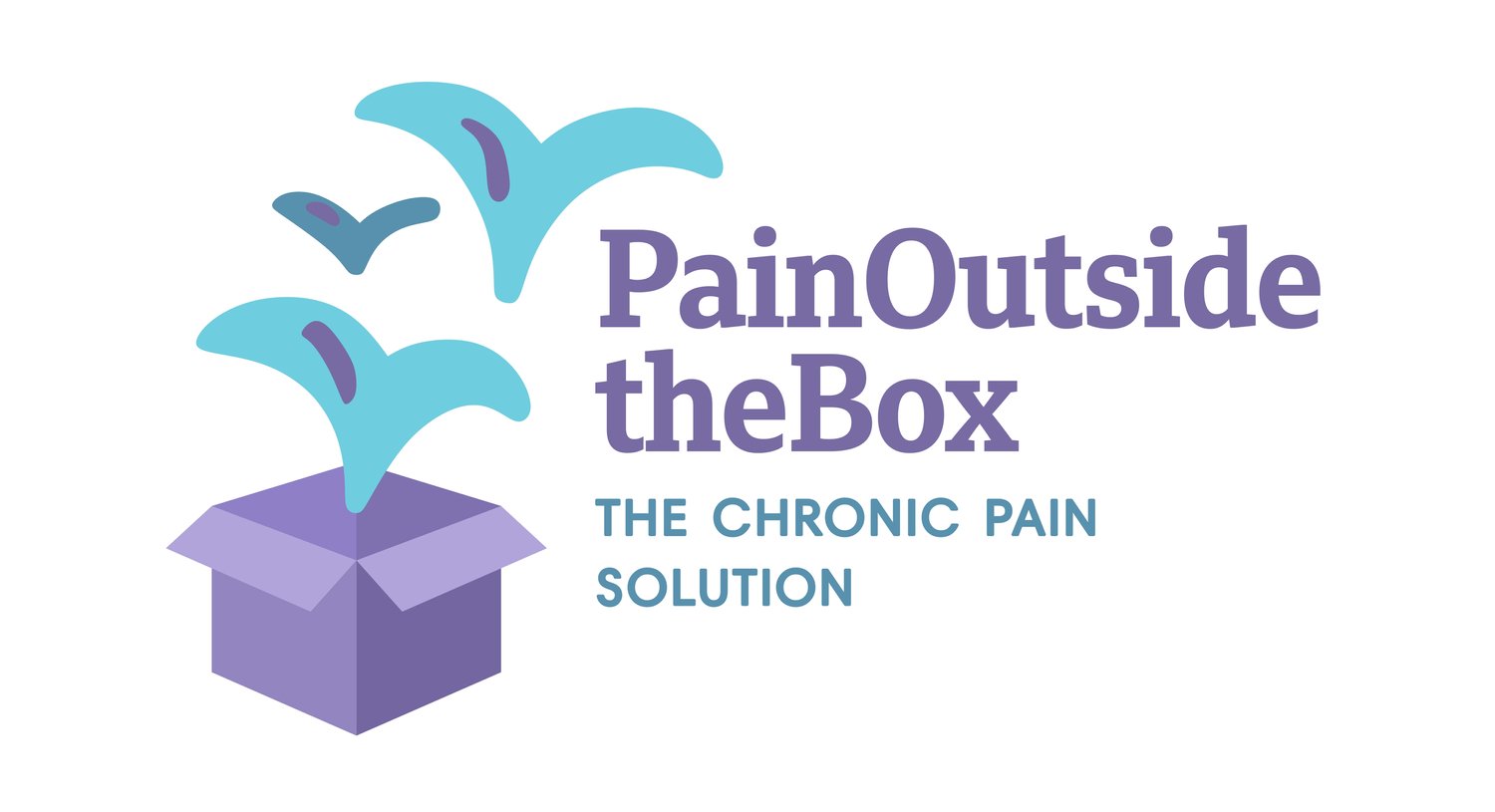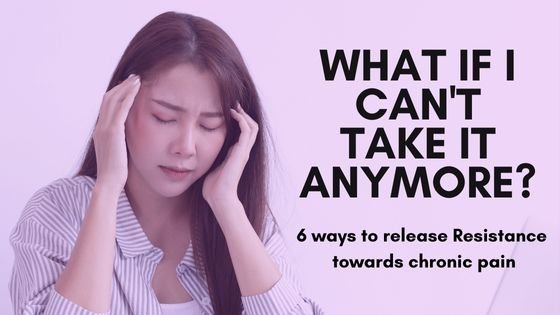“My chronic pain is killing me!” - What to do if you can’t take your pain anymore
As an ex chronic pain sufferer, I’m familiar with the emotional rollercoaster one typically goes through for months or years on end: life with chronic pain can become an oscillating pattern of hope and despair, frustration and fear.
You may have tried to minimize or ignore the pain, only to feel that you’re only kidding yourself.
The fact is, not only don’t you like the state you’re in - you just can’t take chronic pain anymore and you frantically start looking for the next thing to do: visit another doctor, a different treatment, surgery, or simply locking yourself in your room, indulging in your hate towards the world at large.
It all starts with embracing the MindBody Connection
I was stuck in this state until I discovered Dr John Sarno’s work on the condition known as Tension Myositis Syndrome (later changed to Tension Myoneural Syndrome and MindBody Syndrome).
Sarno’s work is based on the fact that mind and body are related, and that our thoughts and emotions can cause real, physical symptoms in the body, which we wrongly misinterpret as injuries, defects or incurable conditions.
Knowing about TMS gives one hope and a totally new way of viewing chronic pain: as a reflection of your own repressed emotions, and an alternative way for depression, negativity and anxiety to manifest.
The proof is there in the growing number of TMS success stories - people with different symptoms (back pain, neck pain, sciatica, fibromyalgia, you name it…) get better after going through the ‘process’, even though that process will vary from one individual to another.
Naively, I thought that because I managed to overcome my chronic pain thanks to Dr Sarno’s teachings, everyone would be able to do the same easily. But I was wrong. Those were early days in my career.
Here are a few things that I’ve discovered since then:
Outer and inner circumstances matter in chronic TMS pain recovery
The fact is, each one of us is entrenched in a different emotional state. Every person’s pain could represent a different threat and take on a totally different meaning. It all depends on their history, and what is or seems to be at stake in their lives due to the persistence of pain.
Let me give you one simple example: it could be way easier for an unmarried wealthy person to work on accepting the pain, then it would be for someone who is terrified of losing his job and being unable to provide for his family, due to the pain.
The wealthy person owns a company that can run without his intervention for some time, and he knows he’ll always have food on the table (plus, there are no wife and kids dependent on him, so perhaps, he’ll feel less guilty about taking his time to work on overcoming chronic pain).
But there is way more at stake in the second situation. There’s a job that may be lost, and a family to feed.
This is not to say that the wealthy person will find it easy either. If he operates out of a strong need to control outcomes in his life, OR if he is absolutely terrified that his pain could lead to serious illness or death, he may find it extremely difficult, if not more.
So as you can see - it all depends on one’s state of affairs as well as one’s inner state of mind.
When I realized this at the beginning of my Coaching career, I wanted to offers solutions that would work for everyone.
Later on, I realized that was nearly impossible. Instead, what I found was one common factor, that if eliminated, could pave the way for healing.
That factor is Resistance.
Why I often talk about Mindset Shifts and Resistance
In my own specific case, learning about TMS served to lift me out of fear and despair and into trust and empowerment. I simply knew that I was on to something that could heal me. And so, the pain became more bearable - and even interesting.
Because of this shift in the way that I viewed and perceived my pains, I eventually conquered all my chronic symptoms. Today, in my coaching and programs I call this a mindset shift - a radical shift in attitude, which essentially involves the release of Resistance.
Resistance refers to any thought, judgement or feeling that is negative with regard to a particular subject. In the case of chronic symptoms, it is essentially that feeling you hold within when you are wishing that the pain were gone and that things were other than what they are.
It is a concept that all spiritual teachers and healers talk about. Eckhart Tolle, in The Power of Now explains the process in the following way:
“To offer no resistance to life is to be in a state of grace, ease, and lightness. This state is then no longer dependent upon things being in a certain way, good or bad. It seems almost paradoxical, yet when your inner dependency on form is gone, the general conditions of your life, the outer forms, tend to improve greatly”.
The highlighting in this quote is my own. I wanted to make a specific emphasis because that phrase perfectly explains what generally occurs when you stop resisting chronic pain: the pain tends to improve greatly (or even disappear!).
How to release your resistance towards chronic symptoms
I realize that what I just described above will sound like a Catch 22 to some.
To get rid of the pain, you need to stop feeling frustrated, annoyed, fearful, helpless and terrified about the pain and / or how the pain could potentially impact your life. Basically, you need to eliminate every negative emotion with regard to something that is essentially perceived as negative.
How do you do this when you feel that you just can’t take your pain anymore?
Below, I will introduce you to a few tips. Please follow these tips once you have excluded serious medical conditions that could be to blame for your symptoms (such as cancer, infection or tumours).
6 ways to stop fearing or resisting your chronic pain
Understand that mindbody /TMS pain is your messenger, not your enemy (and act upon this) - this is usually the first key step. You learn that your repressed or negative emotions can cause real, physical pain. You therefore start to guess what the pain could mean.
You may realize that you need to grieve or that you need to let go of resentment. You may even realize that you need to walk away from a toxic situation, otherwise the pain will attempt to force you out of it in some other, less desirable manner.
Do not try to rush this step - it is the cornerstone of TMS work, and initially, it was the only approach recommended by Dr Sarno and others.
Call a spade a spade. When we use negative adjectives and judgements to describe our pain or condition, we are increasing resistance. This can amplify pain signals in our brain, because words can create emotions and emotions can modulate pain levels.
And therefore, the first thing you can do is to view your symptoms as they are: painful or uncomfortable - and that’s it. Don’t use words like ‘terrible’, ‘agonizing’ or ‘unbearable’.
Notice temporary shifts in pain levels and embrace impermanence. By noticing how pain may fluctuate, decrease or intensify in your day to day, you may realize one thing: that this pain is not as fixed as you may believe. Everything in our lives and in our bodies is impermanent. That means that it is bound to change. Therefore, it does not make sense to indulge in the thought that the future ought to bring more pain. The opposite could also be true.
Don’t think catastrophically. This tip follows on from the previous one. Each time we think negatively about having pain or flare-ups during a future event (whether that event is taking place later today, tomorrow, or next year), we are setting an undesired expectation. Sadly, expectations have a way of coming true, because unconsciously, our brains would be ‘looking out’ for pain and can easily retrigger it when we’re in a state of anticipatory anxiety.
Regulate your nervous system - A dysregulated nervous system is prone to keep recreating mindbody symptoms. Today, there are plenty of tools to help regulate the nervous system. My favourite two are meditation and play. Make sure you find a meditation that gets you to accept your body and your symptoms as they are - that grounds you and gets you to observe your symptoms as present-moment sensations that you can choose to simply notice.
When it comes to play, I refer to any sort of activity that gets your mind off from constantly thinking about or trying to control your pain and that also gets you away from other stressful circumstances in your life; it could be anything from crafts to hiking, coffee mornings or picnics. Make sure that the people you hang out with during this activity (if any) do not impact you negatively through their own negativity or the way they treat you. Most importantly, keep discussions away from the subject of pain!
Pain Reprocessing exercises - Pain Reprocessing Therapy has been found to be the most effective treatment for chronic back pain in the latest clinical trial by Alan Gordon et. al. It can involve different kinds of meditations or exercises that get you to release resistance towards symptoms.
Meditations or visualization exercises that increase trust in your body’s healing capabilities can also be effective in changing your dominant expectations from negative to positive ones. My Pain Reprocessing Program may guide you in this aspect.
It’s multi-faceted, but it’s not as complex as it sounds!
The above may sound lengthy and complicated, but I assure you, it is not. If you feel overwhelmed, just remember one thing: Resistance is making your pain worse. Everything else is just a detail.
So what are you resisting right now? Is it the presence of pain itself? Is it a specific situation or person in your life? What can you do to let go of some of this resistance today (not tomorrow, not next month!)
Solutions can range from taking a day off to regain some equilibrium, walking away from a toxic relationship or career, to simply being open to what your pain is trying to tell you.
Maybe it’s time to finally listen to that voice inside.
Check out my Recovery Programs for deeper, action-oriented work!
If you still struggle with chronic pain and anxiety, and think that your past traumas, or current stressors may be contributing to your symptoms, you may want to look into completing a full TMS Recovery Program.
If you’ve already had therapy or some form of emotional release work but you still struggle with fear or frustration towards the symptoms themselves, you may benefit from Pain Reprocessing.
My programs are fully DIY and grant you lifetime access to all resources.



